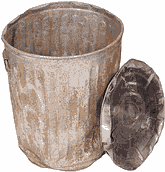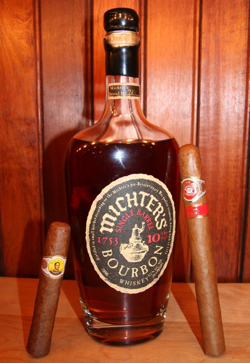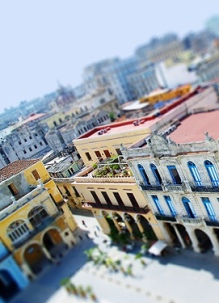Stogie News: Debunking the Anti-Tobacco Junk Science
17 Feb 2009
It seems like every week another study comes out on the subject of tobacco. Nearly all are done by advocates of increased “tobacco control” (a euphemism for higher tobacco taxes and expanded smoking bans) and they all seem to come to the same conclusion: more “tobacco control” is needed.
 Now if the tobacco industry was presenting study after study that concluded that we need fewer smoking bans and lower tobacco taxes, you can bet that reporters and politicians wouldn’t blindly believe their claims. When the anti-tobacco industry has a study that agrees with their anti-tobacco agenda, however, the results are dutifully reported as scientific fact without so much as a second look.
Now if the tobacco industry was presenting study after study that concluded that we need fewer smoking bans and lower tobacco taxes, you can bet that reporters and politicians wouldn’t blindly believe their claims. When the anti-tobacco industry has a study that agrees with their anti-tobacco agenda, however, the results are dutifully reported as scientific fact without so much as a second look.
But if the media and politicians aren’t doing their jobs, who can you turn to to get a straight scoop? One of the best sources is Michael Siegel, who runs a blog called The Rest of the Story.
Siegel, himself a doctor and professor of public health, is an unlikely foe of anti-tobacco activists, especially since he is an advocate of workplace smoking bans. According to a bio on Siegel’s organization, The Center for Public Accountability in Tobacco Control, Siegel is “a physician with 21 years of experience in tobacco control who recently became disillusioned by the direction in which the anti-smoking movement is going.”
According to Siegel, more and more “[t]he tactics being used by many anti-smoking organizations have become questionable, including misleading and deceiving the public, improperly attacking individuals, and improperly using kids to promote a political agenda.” When anti-tobacco activists deemed those who question the link between second hand smoke and lung cancer the equivalent of “holocaust deniers,” Siegel called them out for their fanaticism.
As a doctor and researcher, Siegel has the technical background to examine the methodology of studies to see if the conclusions claimed are actually supported. He finds that they regularly aren’t, such as the often-repeated claim that just a few minutes of exposure to second hand smoke has negative lasting health effects.
Siegel’s writings are invaluable in exposing the “ends justify the means” nature of much of the anti-tobacco movement, whose once possibly well-intentioned aims seem to have turned into an all-out propaganda campaign against an individual’s right to smoke.
photo credit: Actonel

 Blended by Roberto Juarez and Antonio de Jesus, this
Blended by Roberto Juarez and Antonio de Jesus, this 

 1) According to
1) According to  Just because this bourbon isn’t made at the historic Pennsylvania distillery doesn’t mean it isn’t a great spirit. But the fact that bourbon was made in Pennsylvania does let me address one common misconception: Contrary to what you might have heard (and what a friendly bartender recently tried to convince me of), bourbon doesn’t need to made in Kentucky.
Just because this bourbon isn’t made at the historic Pennsylvania distillery doesn’t mean it isn’t a great spirit. But the fact that bourbon was made in Pennsylvania does let me address one common misconception: Contrary to what you might have heard (and what a friendly bartender recently tried to convince me of), bourbon doesn’t need to made in Kentucky. “The Freedom to Travel to Cuba Act, introduced Feb. 4 and referred to the Foreign Relations Committee, prohibits the U.S. president from regulating or prohibiting travel to or from Cuba by U.S. residents, except in times of war between the two countries or of imminent danger to public health or the safety of U.S. travelers.â€
“The Freedom to Travel to Cuba Act, introduced Feb. 4 and referred to the Foreign Relations Committee, prohibits the U.S. president from regulating or prohibiting travel to or from Cuba by U.S. residents, except in times of war between the two countries or of imminent danger to public health or the safety of U.S. travelers.â€ Patrick Ashby
Co-Founder & Editor in Chief
Patrick Ashby
Co-Founder & Editor in Chief Patrick Semmens
Co-Founder & Publisher
Patrick Semmens
Co-Founder & Publisher George Edmonson
Tampa Bureau Chief
George Edmonson
Tampa Bureau Chief